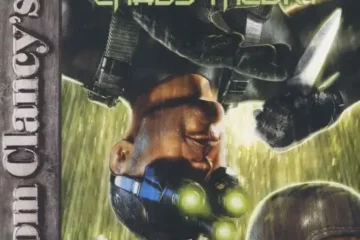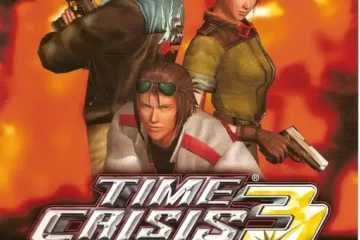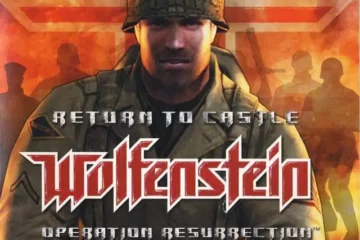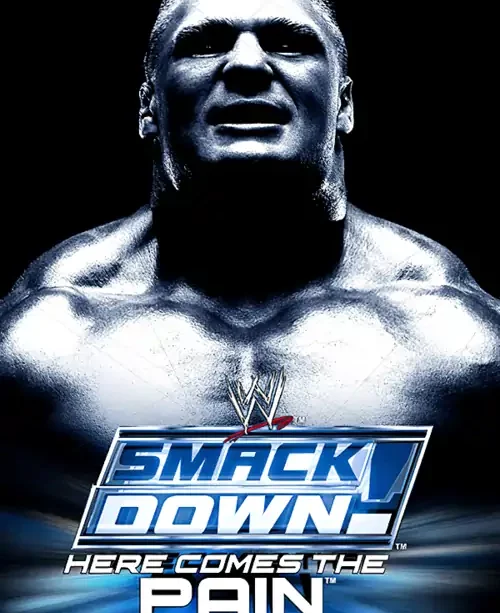
WWE SmackDown! Here Comes the Pain
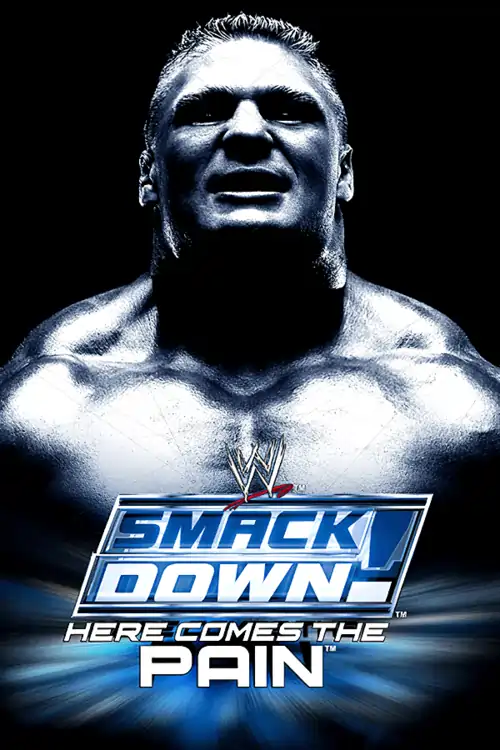
Console: PS2
Publisher: THQ
Genre: Action
Region: EU, US
Released: NA: October 27, 2003 | EU: November 7, 2003 | JP: January 29, 2004
File size: 2.45 GB
Step into the ring with WWE legends and experience intense wrestling action in one of the most acclaimed SmackDown titles.
When WWE SmackDown! Here Comes the Pain dropped on PlayStation 2 on October 27, 2003, it didn’t just raise the bar for wrestling games – it completely shattered it and built something entirely new from the pieces. Developed by Yuke’s and published by THQ, this wasn’t just another roster update with a few new moves thrown in. This was a complete overhaul that set the gold standard for what wrestling games could and should be.
The Wrestling Game That Changed Everything
Here’s what made Here Comes the Pain legendary – it was built on a completely overhauled engine that delivered faster-paced action while somehow maintaining the strategic depth that made wrestling games special. The authentic wrestler silhouettes, the advanced grappling system, the way each superstar felt genuinely unique – it all combined to create something that wrestling fans still talk about with reverence today.
The roster was absolutely stacked with over 60 superstars, featuring everyone from established legends like The Rock and Stone Cold Steve Austin to rising stars like John Cena, Batista, and Rey Mysterio. But it wasn’t just about quantity – each wrestler felt distinctly different, with their own movesets, strengths, weaknesses, and playing styles that actually mattered during matches.
What really set this game apart was how it rewarded timing and strategy over button-mashing. You couldn’t just spam the same moves and expect to dominate. Every grapple, every reversal, every finisher setup required precision and understanding of your chosen wrestler’s capabilities. It was like playing chess, except the pieces were 300-pound athletes throwing each other around a squared circle.
What Made It Legendary:
- Revolutionary grappling system with multiple reversal opportunities
- 60+ superstar roster including legends like Roddy Piper and Ultimate Warrior
- Immersive Season Mode spanning 52 weeks of WWE programming
- Advanced submission system with interactive mini-games
- First WWE game to feature the Elimination Chamber match type
Core Mechanics and Control Fundamentals
Here Comes the Pain’s control scheme was pure genius – it managed to balance accessibility for newcomers with the depth that hardcore wrestling fans craved. Understanding these fundamentals wasn’t just helpful; it was absolutely crucial if you wanted to progress beyond getting your digital teeth kicked in by the AI.
The grappling system was the heart of everything. Circle gave you light grapples for quick moves and positioning, while Square delivered the heavy-hitting power moves that could change the entire momentum of a match. But here’s where it got interesting – L2 and R2 became your lifelines for reversals and counters. Master these buttons, and you could turn any opponent’s offense into your opportunity.
The Art of the Irish Whip
The Irish Whip system was where strategy really came into play. Tap R1 to send your opponent bouncing off the ropes or into the turnbuckles, then follow up with devastating rebound moves. But here’s the beautiful part – skilled players could catch their opponent mid-rebound with Circle or Square, completely reversing the momentum and taking control of the match.
Running attacks added another layer of complexity. Hold X while sprinting to perform dash strikes or shoulder tackles that could break up an opponent’s momentum or set up your own offensive sequences. The key was learning when to use these moves – timing was everything.
Essential Control Tips:
- Stamina Management – Avoid button mashing to prevent fatigue penalties
- Reversal Timing – Practice in training mode to master counter windows
- Momentum Building – Chain successful moves to unlock finisher opportunities
- Body Part Targeting – Focus attacks on limbs to set up submissions
- Environmental Awareness – Use turnbuckles and ropes strategically
Match Types and Strategic Mastery
Here Comes the Pain offered eight core match variations, and each one demanded completely different tactics and mindsets. This wasn’t just cosmetic variety – each match type fundamentally changed how you approached combat, strategy, and victory conditions.
Standard Singles – The Foundation
The classic one-on-one match was where you learned to be a complete wrestler. This was pure skill versus skill, with no weapons, no outside interference, just you and your opponent testing every aspect of your game. Mastering reversals became crucial here because a single missed counter could swing the entire match.
The key strategy was targeting specific body parts – work the legs to hamper mobility, pound the head to reduce resistance to finishers, or focus on the arms to weaken their grappling ability. It was methodical, strategic wrestling at its finest.
Hardcore – Controlled Chaos
When weapons started spawning and disqualifications went out the window, everything changed. Chairs, tables, and steel steps became extensions of your moveset. The beautiful thing about hardcore matches was learning that bigger wasn’t always better – timing a chair shot perfectly was more effective than wildly swinging and leaving yourself vulnerable.
Breaking tables with strong attacks delivered extra damage, but you had to set them up properly. The environmental storytelling was incredible – fights could spill into the crowd, around the announce tables, or up the entrance ramp. Every surface became a potential weapon or platform for spectacular moves.
Elimination Chamber – The Ultimate Test
This was Here Comes the Pain’s masterpiece – six wrestlers entering at staggered intervals, pods bursting open to release fresh opponents, and weapons stored inside waiting to be discovered. Managing your stamina became crucial because you never knew when the next wrestler would enter and turn your one-on-one advantage into a two-on-one nightmare.
Match Type Breakdown:
- Tag Team – Coordinate with partners using strategic tagging and double-team finishers
- Steel Cage – Escape by climbing walls or win by traditional pinfall/submission
- Falls Count Anywhere – Use environmental hazards throughout the entire arena
- Ladder – Retrieve championship belt while preventing opponent climbs
- TLC – Master combination of all three weapon types for maximum carnage
Superstar Profiles and Moveset Mastery
Each wrestler in Here Comes the Pain’s massive roster wasn’t just a different skin over the same moves – they were genuinely unique fighters with distinct strengths, weaknesses, and optimal strategies. Understanding your chosen superstar’s capabilities was the difference between domination and disappointment.
The Powerhouse Archetype
Brock Lesnar epitomized raw power with his exceptional strength stats and devastating suplex chains. His F5 finisher could end matches instantly, but his low stamina meant you had to pick your spots carefully. Every move had to count because once that stamina bar depleted, you were vulnerable to quick, technical opponents.
The Undertaker brought a different kind of power – supernatural endurance combined with impact moves that could change the match’s entire complexion. His Tombstone Piledriver was slow to set up but absolutely devastating when it connected. Playing as Taker meant being patient, weathering your opponent’s offense, and striking when the moment was perfect.
Technical Excellence and High-Flying Artistry
Kurt Angle was the submission master, with his Angle Lock capable of making any opponent tap out if you’d properly worked their legs throughout the match. Playing as Angle required patience and strategy – methodically breaking down your opponent’s limbs before going for the kill.
Rey Mysterio represented pure speed and aerial artistry. His 619 and West Coast Pop were lightning-fast and could be executed from various positions, but playing as Rey meant avoiding prolonged ground exchanges where his size disadvantage became apparent. It was all about hit-and-run tactics and spectacular high-flying moves.
Character Categories:
- Strikers – Randy Orton’s RKO could be executed instantly from any position
- Versatile – Chris Benoit’s balanced approach with reversals into diving headbutts
- Rogues – Eddie Guerrero’s Frog Splash and masterful feint techniques
- Legends – Roddy Piper and Ultimate Warrior with classic wrestling styles
- Rising Stars – John Cena and Batista representing the future of WWE
Season Mode: Your Road to Immortality
Season Mode wasn’t just a career mode – it was a full 52-week journey through the WWE universe that felt like living through an actual wrestling storyline. Every decision mattered, every match had consequences, and your character’s progression felt organic and meaningful.
The beauty of Season Mode was how it mirrored real WWE programming. You’d start on shows like Heat and Velocity, working your way up through increasingly important matches and storylines. Clean wins built your reputation, while cheap victories and disqualifications could damage your standing with both fans and management.
The Championship Journey
The progression system was brilliant in its realism. You’d begin by establishing yourself in opening matches and backstage segments, gradually building momentum through successful feuds and impressive performances. The mid-card championship hunt felt like a genuine stepping stone rather than a meaningless detour.
Tag team campaigns offered a completely different experience, requiring you to maintain partner chemistry while avoiding friendly fire in double-team maneuvers. The AI actually remembered your actions – treat your tag partner poorly, and they might abandon you during crucial matches.
Season Mode Progression:
- Weeks 1-12 – Establish character through Party Show matches and rival storylines
- Weeks 13-28 – Pursue secondary championships and Battle Royal victories
- Weeks 29-36 – Form alliances and compete for Tag Team gold
- Weeks 37-44 – Climb WWE Championship ranks through qualifying matches
- Weeks 45-52 – WrestleMania showdown and title defenses
Advanced Techniques and Pro-Level Combos
Once you’d mastered the basics, Here Comes the Pain revealed its true depth through advanced techniques that separated the weekend warriors from the legitimate contenders. These weren’t just flashy moves – they were essential skills for anyone serious about dominating both single-player campaigns and multiplayer sessions.
Reversal and Counter Systems
The Reversal Stun Cancel was a game-changer – immediately after successfully reversing an opponent’s move, you could input a strong grapple to transition into a powerful throw before they recovered. It required precise timing, but mastering this technique made you nearly unstoppable against predictable opponents.
Dash attacks opened up combo opportunities that many players never discovered. Perform a dash attack to stun your opponent, then immediately chain into a running uppercut or scoop slam for devastating damage. The timing window was small, but the payoff was enormous.
Submission Mastery
The submission system was incredibly deep once you understood its intricacies. Combining light and strong submissions could lock opponents into multi-limb holds, forcing rapid input mini-games that tested both players’ skills. The key was softening up specific body parts throughout the match before attempting submissions.
Advanced Combat Techniques:
- Aerial Recovery – Press Circle mid-dive for safe rebounds when moves are evaded
- Momentum Management – Keep gauge above 50% to maintain finisher strength
- Chain Reversals – Link multiple counter opportunities for extended offense
- Environmental Exploitation – Use ring geometry and weapon placement strategically
- Stamina Cycling – Balance offense with recovery periods for sustained performance
Hidden Unlockables and Secret Content
Here Comes the Pain was packed with secret content that rewarded dedicated players with incredible unlockables. These weren’t just cosmetic additions – they were substantial features that could completely change your gameplay experience.
Legendary Wrestlers and Hidden Arenas
Unlocking legends like Rowdy Roddy Piper, The Ultimate Warrior, and Andre the Giant required completing specific and often challenging conditions in Season Mode. Beating Ultimate Warrior on Raw 50 without using any reversals? That was the kind of old-school challenge that made earning these characters feel genuinely rewarding.
The hidden arenas were incredible discoveries – classic WCW and ECW ring variants that brought their own atmosphere and nostalgia. Finding those backstage keys hidden under ring posts during Season Mode was like uncovering buried treasure.
Major Unlockables:
- Create-a-Moveset Mode – Earned by completing Career on Hard difficulty
- Alternate Costumes – High popularity scores unlock special character outfits
- Fatal Four-Way Matches – Added to Exhibition by winning multi-man matches
- Hero Stat Bonuses – Repeat finisher usage boosts wrestler statistics
- Secret Animations – Hidden taunts and victory celebrations
Multiplayer Domination Strategies
Split-screen multiplayer was where Here Comes the Pain truly came alive. This was where friendships were tested, rivalries were born, and legends were made on countless Saturday nights across the world. The game supported up to four players, creating chaotic free-for-alls that could last for hours.
Psychological Warfare
The key to multiplayer domination wasn’t just technical skill – it was understanding your opponents’ patterns and exploiting their weaknesses. If your friend always went for the same reversal timing, you could feint moves to bait those reversals and punish them immediately.
Environmental awareness became crucial in multiplayer. Using ring ropes and barricades to inflict extra damage, Irish whipping opponents into steel steps for stun opportunities, or positioning yourself near weapons in hardcore matches – every element of the arena became a strategic consideration.
Frequently Asked Questions
Which match type offers the best Season mode momentum?
Elimination Chamber and Iron Man matches provide the highest fan popularity points when won decisively. These should be prioritized on pay-per-view nights for maximum career advancement and storyline progression.
How do I unlock The Ultimate Warrior?
In Season mode, you need to defeat Ultimate Warrior in a Raw 50 match without using any reversals. This is one of the most challenging unlock conditions in the game, requiring perfect timing and strategic play without relying on counter mechanics.
Can every move be reversed?
No, some powerful finishers and multi-step combo sequences are unreversible. Learning to anticipate these moves and block or dodge them becomes crucial for high-level play, as reversal timing won’t save you from everything.
How do I save custom movesets and created superstars?
Access the Memory Card menu through the PS2 dashboard and ensure you have at least 1 MB of free space available for Create-a-Suite data. The game’s creation tools are extensive and require adequate storage space.
Are there traditional cheat codes for instant victories?
No, Here Comes the Pain doesn’t include traditional cheat codes for instant wins. Victory comes through season performance mastery and developing superior reversal mechanics and match psychology.
The Enduring Legacy of Wrestling Excellence
WWE SmackDown! Here Comes the Pain on PlayStation 2 remains the cornerstone of sports entertainment gaming, and for good reason. More than twenty years after its release, wrestling fans still consider it the gold standard by which all other wrestling games are measured. Its nuanced grappling mechanics, expansive roster, and deep Season mode created an experience that captured the essence of what made WWE special during the Ruthless Aggression Era.
The game’s influence can be seen in every wrestling title that followed, from the submission systems to the career progression mechanics. Modern WWE games still chase the perfect balance of accessibility and depth that Here Comes the Pain achieved effortlessly. It proved that sports entertainment games could be both fun for casual fans and rewarding for hardcore enthusiasts.
What made Here Comes the Pain special wasn’t just its technical achievements – though those were considerable. It was the game’s understanding that wrestling is about storytelling, personality, and the drama that unfolds both in and out of the ring. Every match felt like it mattered, every character had distinct motivations, and every victory was earned rather than given.
Whether you experienced Here Comes the Pain during its original PlayStation 2 run or you’re discovering it through backward compatibility and emulation, the game remains essential wrestling entertainment. It represents the peak of what sports entertainment gaming can achieve when developers truly understand both the technical requirements and the emotional appeal of professional wrestling.
In the pantheon of PlayStation 2’s greatest achievements, WWE SmackDown! Here Comes the Pain stands as proof that some games transcend their medium to become cultural touchstones. More than just a wrestling game, it was an interactive celebration of an art form that continues to captivate audiences worldwide. No wonder wrestling fans still dream of a proper remake – some masterpieces deserve to be experienced by every generation.
Related PlayStation 2 Wrestling Games:
Tom Clancy’s Splinter Cell – Chaos Theory
October 24, 2025Time Crisis 3
October 24, 2025Return to Castle Wolfenstein: Operation Resurrection
October 24, 2025

